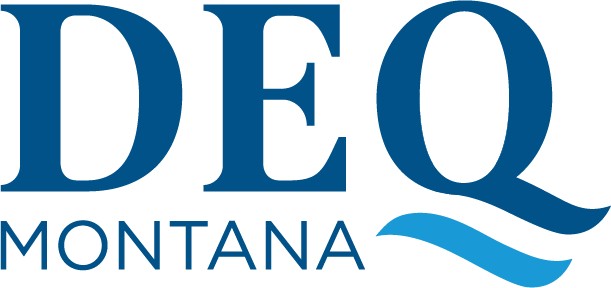Program Overview
The Bipartisan Infrastructure Law provides grant funding to States and Tribes to improve the reliability and resiliency of their electrical grids. Funding will be allocated by formula on an annual basis for fiscal years 2022 – 2026. States and Tribes may sub-grant the funding to eligible entities for qualifying investments.
These grants offer a unique opportunity to address current and future resilience needs from hazards due to events such as extreme weather, wildfire, natural disaster, or human-caused outages. The funding will also promote economic development and needed improvements in infrastructure, including grid modernization investments in underserved communities.
For more information on Section 40101(d) Grid Resiliency funding through the U.S. Department of Energy, including information on the grant application portal, allocation amounts, FAQs, and an example program narrative for application, visit:
National Energy Technology Laboratory program website
Dept. of Energy - Grid Resiliency website
Dept. of Energy - Grid Resiliency Formula Grant Program website
June 2025 Stakeholder Engagement Session
- Department of Environmental Quality Presentation on grid resilience funding objectives, background, reporting metrics, and updates.
- LBNL Presentation on grid resilience metrics for utilities.
- Baringa Consulting Presentation on resilience planning and investment options for extreme weather hazards in Montana.
Grid Resiliency and Reliability Grants Contacts
Section Supervisor
Kyla Maki (406) 444-6459
Energy Resource Professional
Jessi Finstad (406) 444-1842
To stay up to date on the Montana 401010(d) resiliency program and future sub-grant opportunities, sign up for our mailing list below.
Montana Energy Infrastructure Resilience Grant Program Announcements
Montana’s Energy Infrastructure Resilience Grant Program has issued a “Notice of Intent to Award” for the 2024 Grid Resilience Subaward Call for Applications
To review the Notice of Intent to Award, you can go to the Electronic Montana Acquisition Contracting System (eMACS) public website.
If you submitted a response as an applicant to this solicitation, you may log on to the vendor portal to view the documents.
Montana’s Energy Infrastructure Resilience Grant Program is amending the timeline found on page 2 of the EIRGP Request for Applications from April 2024. This is the amended tentative timeline for the application review, selection, and contract execution:
| Activity | Estimated Date |
|---|---|
| Deadline (amended) for eligible entities to submit EIRGP applications via eMACS. | 7/3/2024 2:00pm MDT |
| Agency review committee meets to review and score applications. | Week of 8/12/2024 |
| Intent to award successful applicants. The list of successful applicants will be posted to DEQ's website. List of successful applicants and projects submitted by DEQ to U.S. Department of Energy (DOE) for award approval. | 8/28/2024 |
| DOE reviews list of successful applicants and notifies DEQ of their approval. | By mid-October 2024 (tentative). DOE timeline for review outside of DEQ's control. |
| Contract development (DEQ and successful approved applicants). | 10/14/2024-11/8/2024 (tentative) |
| Final contracts with successful applicants and project work can begin. | 11/22/2024 |
Eligible entities that can apply for sub-grant funding include the following recipients:
- Electric grid operator.
- Electricity storage operator.
- Electricity generator.
- Transmission owners or operators.
- Distribution providers.
- Fuel suppliers.
Examples of qualifying resiliency measures include, but are not limited to:
- Weatherization technologies and equipment.
- Fire-resistant technologies and fire prevention systems.
- Monitoring and control technologies.
- Undergrounding of electrical equipment.
- Utility pole management.
- Relocation of power lines or the reconductoring of power lines with low-sag, advanced conductors.
- Vegetation and fuel-load management.
- Use or construction of distributed energy resources for enhancing system.
- Adaptive capacity during disruptive events, including—
- microgrids
- battery-storage subcomponents
- Adaptive protection technologies.
- Advanced modeling technologies.
- Hardening of power lines, facilities, substations, of other systems.
- Replacement of old overhead conductors and underground cables.
Sub-grantees must follow Federal requirements to utilize funding for qualifying projects through the Montana sub-grant program. Requirements include domestic material sourcing, prevailing wage conditions, and cost matching. See the terms below for more information on requirements, limitations, and cost matching.
Federal Requirements
- Regular reports on financials, project progression, and metrics.
- Projects must comply with the Federal:
- National Environmental Policy Act
- Build America Buy America Act
- Domestic material sourcing requirements
- Davis-Bacon Act
- Prevailing wage requirements
Federal Limitations
- Funding cannot be used for: Cybersecurity, new generation facilities, large-scale battery storage not used for adaptive capacity.
- Grant funded projects cannot have a cost recovery for any portion of the project.
Cost Matching
Matching funds are required for entities that receive a subgrant with the amount based on the annual amount of electricity sold. In addition to the match requirements detailed below, grant recipients will be required to provide a 15% cost share on the federal award.
- Entities that sell more than 4,000,000 MWh of electricity per year will be required to match 100% of the amount of the sub-grant.
- Entities that sell 4,000,000 MWh or less of electricity per year require a 33% match of the total sub-grant.
- Small Utilities: Funds must be made available to small utilities (less than 4,000,000 MWh per year), based on the percentage of customers served by those utilities.
-
Please review the Request for Applications and corresponding Request for Application Appendices for information on how to apply through eMACS.
